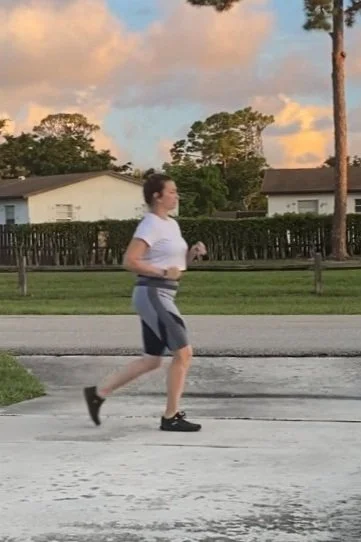Running up that hill…
When COVID hit, I needed an excuse to go outside and enjoy some fresh air. We all were cramped in our homes and it was so nice to have an opportunity to decompress and look into an open sky. I rediscovered running. That lengthy, painful practice that takes your body to an aerobic edge like no other. The industry is pretty clear that HIIT training is the best way to get improvement in strength and cardio function but I was looking for a state a flow to give sense to the uncertainty of the season. Running was it. But it didn’t feel good, it was a price to pay for that invigorating feeling of freedom and I was committed to the deal.
Not sure if it was the increase of speed or the treadmill running in the summer, I developed a terrible pain in my heel. A quick google search unanimously revealed that this heel pain was due to a condition called plantar fasciitis, click here for an article about it. Looking at the options, I opted for a long term solution, one that would be affordable but painful, and annoying all the time. I decided to resolve strengthen my feet!
This article is about how developing sensory awareness at the feet can help your running form. The way we use our feet influences our running movement pattern. If you see a cat move, you will see their smoothness and grace comes from the fact that they use their entire bodies to pounce and glide across the move. Humans however, lose the use of their feet at an very young age. As soon as we are outfitted in our first pair of shoes, our foot begins to deform.
A bunion is a sign that there is loss of mobility in the joint at the big toe. A characteristic called hallux valgus. This made it a priority to care for the prominent bunions that I presented on my every own feet.
I invested in a pair of shoes that had a toe box that allowed for foot splay. Pictured here are my first pair of barefoot shoes. These are by Xero Schoes and I love them.
The next part of the puzzle was learning to walk again using this part of my foot. Luckily, I had broken my wrist in October 2021 so I was pretty much working with a blank canvas. After 6 weeks to complete and utter rest, I headed back to the running track at the local park for what must have been the slowest most awkward “run” of my life. My legs ached, I felt I was running so low to the floor. I had added 5 whole mins to my pace. Somewhere along the line however, as slow as I was going, I found a comfortable stride for the first time in my life. I focused on using my entire foot in my running, almost massaging the bottom of my feet on the uneven terrain. People would pass me by but I kept my slow, comfortable pace and when I arrived at my goal, I felt a sort of optimism.
I read a few books on running and am grateful for running influencers, I will share their info below. I concluded that the best running takes place with light-footed strides starting at the heel shifting into the exterior side foot, moving then from the pinky toes to the big toe, the hallucis joint, which I was going to have to learn how to use again. (Enter glute activation video here).
Once I became aware of the how this sequence of events felt in my body, I needed a core stable enough to support this movement. Having taken 6 weeks off from any kind of physically strenuous activities, my body had lost it’s ability to sustain an upright position when challenged with running on uneven terrain. It was uncanny to feel so unsteady while trying to do something that always seemed effortless. For this reason, I started doing daily morning core stability drills. Sometimes these sessions lasted 5 minutes, sometimes 15, sometimes… I would lay on the floor and just be there and that was enough for that day. Click here for an example of one of those morning routines.




